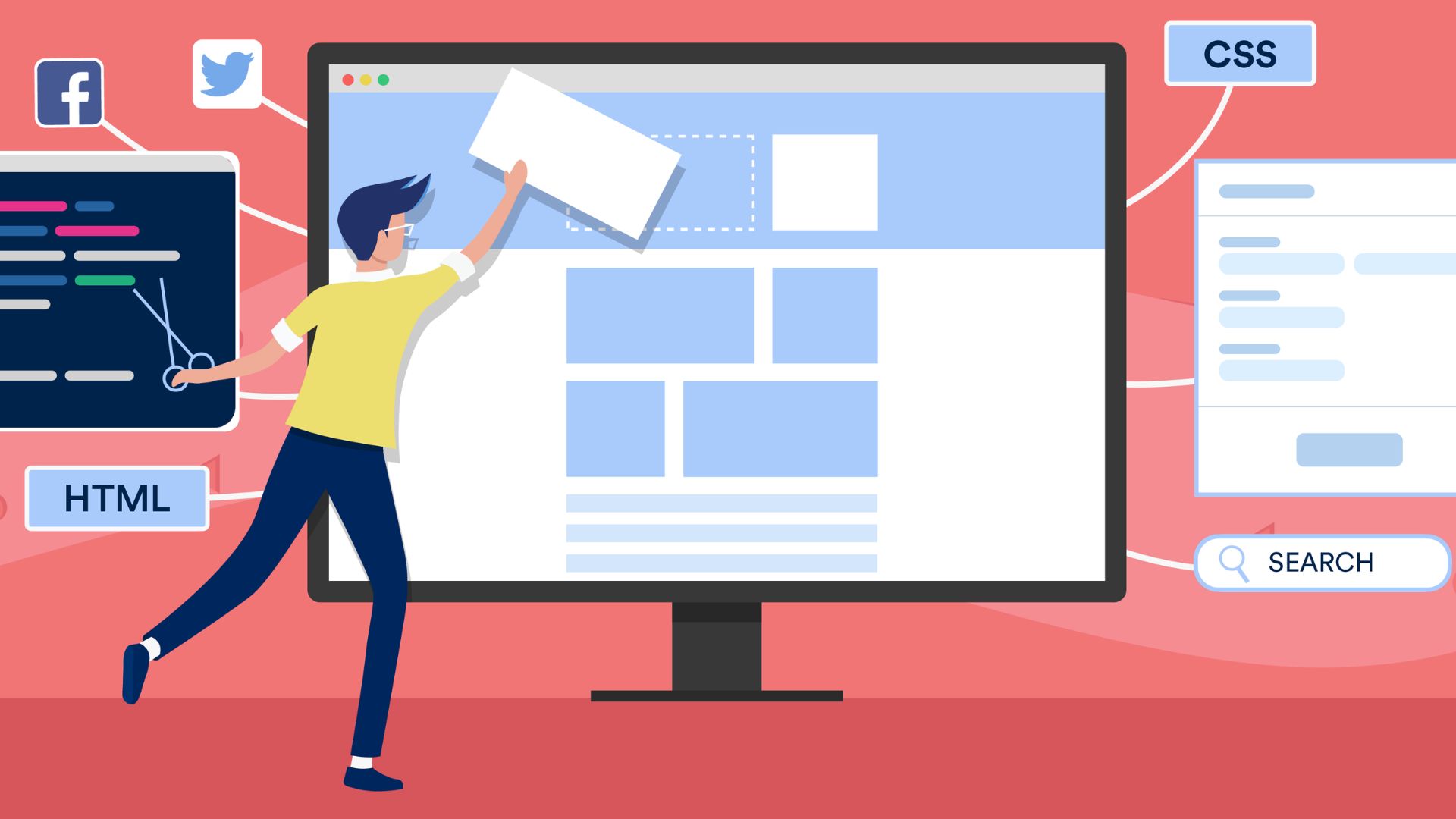Does the idea of creating stunning and user-friendly websites ignite your passion? If you possess a creative eye, a knack for problem-solving, and a desire to build something from scratch, then a career as a web designer might be the perfect fit for you! Web designers play a crucial role in the digital landscape. They are the bridge between creativity and functionality, translating ideas into visually appealing and user-friendly websites. A successful web designer not only understands aesthetics but also possesses a technical foundation to ensure websites function seamlessly across various devices. In this article, we will explore education options and tips to launch your successful career as a web designer.

The Enticing World of Web Design
To begin with, the world of web design is a dynamic and ever-evolving playground for creative minds. Additionally, it’s a perfect marriage of artistic expression and technical problem-solving, allowing you to translate ideas into visually stunning and user-friendly websites. Here are some reasons why this career path might be the perfect fit for you:
Creative Expression
Unleash your creativity by designing user interfaces, crafting layouts, and selecting visually appealing colour palettes.
Technical Challenges
Furthermore, hone your problem-solving skills by tackling the technical aspects of web design, including coding and understanding user experience (UX) principles.
Constant Evolution
Stay ahead of the curve as web design trends are constantly evolving, ensuring a stimulating and ever-changing career.
Diverse Opportunities
Moreover, you should explore a wide range of specialities within web design, from user interface (UI) design to front-end development, catering to various industries and project types.
Remote Work Potential
Additionally, many web design positions offer remote work options, allowing for flexibility and location independence.
Building Your Web Design Skillset
So, you’ve set your sights on becoming a sought-after web designer. Now it’s time to cultivate the essential skillset that will empower you to translate your vision into reality. Here are some key areas to focus on:
1. Design Fundamentals
Visual Design
Develop a strong foundation in design principles like colour theory, typography, layout, and composition.
User Interface (UI) Design
Additionally, understand how to design user interfaces that are both aesthetically pleasing and intuitive for users to navigate.
User Experience (UX) Design
Learn the principles of user experience (UX) design, focusing on creating websites that cater to user needs and provide a seamless experience.
2. Technical Skills
HTML, CSS, and JavaScript
Mastering these fundamental coding languages forms the backbone of web design and allows you to translate design concepts into functional websites.
Content Management Systems (CMS)
Furthermore, familiarity with popular CMS platforms like WordPress or Wix can be advantageous in the industry.
Responsive Design
Additionally, you should learn how to design websites that adapt and function flawlessly on various devices, from desktops to smartphones.
3. Soft Skills
Communication
Effective communication skills are crucial for collaborating with clients, developers, and other stakeholders.
Problem-Solving
Moreover, web design involves tackling technical challenges and finding creative solutions.
Time Management
Additionally, develop strong time management skills to meet deadlines and manage multiple projects efficiently.
Adaptability
Embrace the ever-changing nature of the web design industry by staying updated on the latest trends and technologies.
Charting Your Course: Education and Training
The beauty of a web design career lies in its flexible learning paths. Additionally, there’s no single prescribed route to success. Here are some popular educational options to consider, each catering to different learning styles and time commitments:
Formal Education
Pursue a bachelor’s degree in web design, graphic design, or computer science to gain a solid foundation in design principles and technical skills.
Coding Bootcamps
Furthermore, immerse yourself in intensive coding boot camps that equip you with the essential coding skills needed for web design in a shorter timeframe.
Online Courses
Take advantage of numerous online courses and tutorials to learn web design skills at your own pace and convenience.
Self-Learning
Furthermore, with dedication and discipline, you can teach yourself web design by utilizing online resources, and tutorials, and practising your skills through personal projects.
Launching Your Web Design Career
Now that you’ve equipped yourself with the knowledge, technical skills, and a strong design foundation, it’s time to unleash your passion and translate it into a thriving web design career. Therefore, here are some actionable steps to propel you forward:
Build a Strong Portfolio
Showcase your design skills and talent by creating a compelling portfolio website. Additionally, include a variety of projects that demonstrate your versatility and expertise in web design.
Network and Connect
Additionally, actively participate in online design communities, attend industry events, and connect with other web designers to build your network and gain valuable insights.
Start Freelancing
Freelancing allows you to gain experience, build your client base, and establish yourself as a web designer. Furthermore, there are numerous freelance platforms where you can find web design projects to kickstart your career.
Tailored Resume and Cover Letter
Furthermore, craft a targeted resume and cover letter highlighting your web design skills and experiences relevant to the specific position you’re applying for.
Keep Learning
Moreover, the world of web design is constantly evolving. Stay ahead of the curve by attending workshops, taking online courses, and familiarizing yourself with the latest design trends and technologies.
Conclusion
In conclusion, becoming a successful web designer requires a blend of creativity, technical proficiency, and a passion for crafting user-friendly websites. By honing your design skills, developing essential technical knowledge, and constantly learning and adapting, you can navigate your way into this exciting and rewarding career path. Additionally, remember, that the journey to becoming a web designer is an ongoing process filled with learning experiences and opportunities to grow. So, unleash your creativity, embrace the challenges, and embark on your path to becoming a sought-after web designer in today’s digital world!

